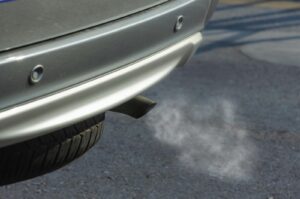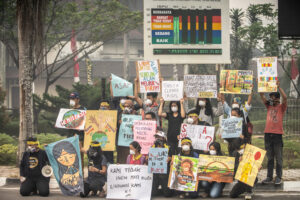Intelligent infrastructure for cleaner air
Air quality was high on most local authorities’ agendas well before COVID-19, but the impact of the pandemic has thrown into sharp relief a number of major transport issues, including air quality.
The March lockdown and Government guidance to stop all non-essential journeys, saw a dramatic reduction in the number of vehicles on our roads, with air quality levels in towns and cities immediately improving.
In London for instance, in the first six weeks of lockdown levels of PM2.5 fell by around 35%, with significant falls also being recorded in cities across the UK.
Inevitably though, with lockdown restrictions easing and the public showing a reluctance to return to public transport, traffic levels are rising again and air quality levels are starting to deteriorate.
As travellers worldwide have been advised to avoid public transport unless they have no alternative, countries that lifted restrictions before the UK, such as China and Sweden, have seen traffic congestion rise higher than pre-lockdown levels, while many European cities, including Paris and Berlin, are seeing a rapid return to pre-lockdown levels.
Put simply, the climate and health emergency that pollutants cause has not gone away.
However, we should not accept that deteriorating air quality is a foregone conclusion, and as a leading supplier of intelligent traffic systems, Siemens Mobility Limited has a key role to play in supporting towns and cities address this issue.
We have a portfolio of proven products and systems that enable transport networks to be managed in a holistic fashion, with air quality the key outcome.
One of the most targeted tools in our box is our Clean Air Zone (CAZ) solution, which is proven to significantly reduce the volume of nitrogen oxides and particulates in the air.
A targeted and effective approach, the system discourages the usage of older, higher-polluting vehicles in towns and cities across the UK.
Our systems are already at the heart of schemes in London, with the capital’s low emission and congestion charging zones having proven their effectiveness for over a decade now; these systems being designed, installed and operated by Siemens Mobility.
After six months of operation of London’s new Ultra Low Emission Zone, research by the Mayor of London’s Office reported that NOx emissions from road transport in the central zone had reduced by 31% and CO2 emissions from road transport had reduced by 9,800 tonnes. On an average day, 13,500 fewer higher polluting vehicles were driven in the zone.
We are now working with other cities, including Leeds and Birmingham, to deliver tailored CAZ solutions to help meet their air quality improvement targets.
CAZ solutions are undoubtedly effective, but there is a range of other systems that can be used separately or as part of an integrated solution to positively impact air quality.
These range from the simple coordination and optimisation of traffic signals to minimise congestion and improve traffic flow, to the use of air quality data to drive strategic traffic management interventions and decisions.
To enable that to happen, we have partnered exclusively with air quality experts EarthSense to supply the Zephyr® air quality measurement system for traffic management applications. Measuring a range of pollutants, as well as temperature and humidity, the sensor captures an accurate picture of the air quality in real-time. It can be integrated with our traffic signals and Stratos traffic management system to enable authorities to make meaningful interventions and to implement traffic strategies based on air quality data and outcomes.
For more information please contact
Tim Wray – tim.wray@siemens.com / +44 7808 822443
This article first appeared in the July issue of the Air Quality News magazine, which you can read here.














